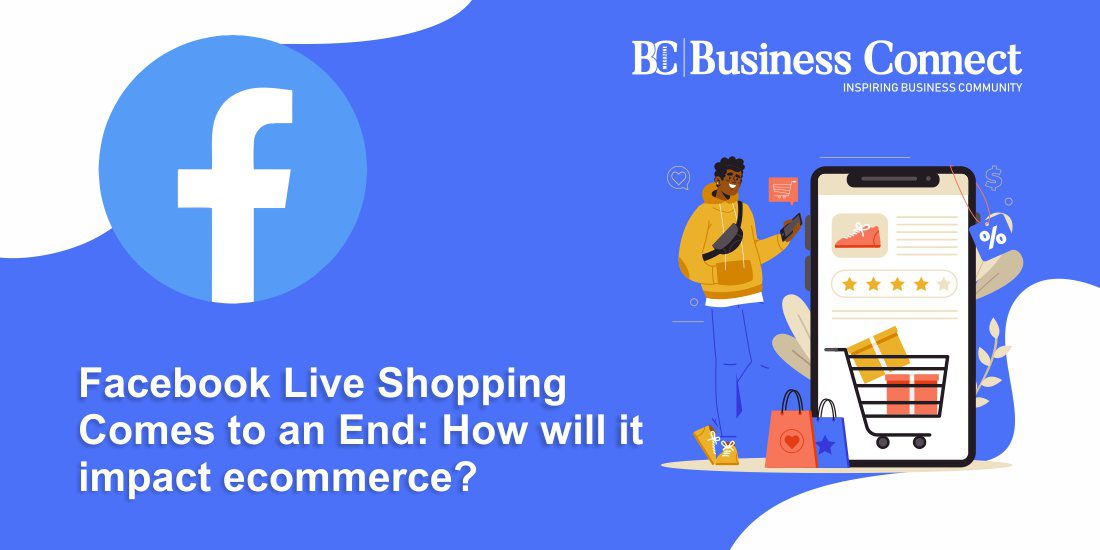Facebook Live Shopping Comes to an End: How will it impact ecommerce?
Live Shopping will be discontinued by Meta, the company that owns Facebook, in order to concentrate on Reels, a product for short-form video content that is available on both Facebook and Instagram. Facebook announced on its business help page that as of October 1, 2022, “you will no longer be able to host any new or scheduled live shopping events on Facebook.”
Reels on Facebook and Instagram, a short-form video product from Meta, will now receive our attention as consumer viewing habits change in favour of this format. The social media specialist claims that after the deadline of October 1 users will be able to broadcast live events using Facebook Live. However, users won’t be able to tag objects or add products to playlists when watching Facebook Live videos.
The user who wants to deeply engage their Instagram followers with a product can try tagging it in Reels, according to Meta. The social media juggernaut did not specify whether Facebook Reels would include this feature or not, though.
In order to enable users to sell goods through Facebook’s live streaming feature, the social media platform introduced Live Shopping back in 2018 in Thailand. 2020 saw its public rollout to more users after being delayed for two years. The function was designed to give brands and creators a hands-on means of promoting their products, engaging with viewers, and attracting new clients.
The business has tested new features ever since it launched. “Live Shopping for Creators” was a test that Facebook ran in November 2021. In order to encourage major brands to try out the feature, it also introduced “Live Shopping Fridays” last year. At checkout, a small selling fee was also levied by the social media site. Hence, the concept of monetizing the feature has been available during the time.
Aside from Facebook, TikTok is also rumoured to have abandoned its plans to develop the “TikTok Shop” live e-commerce tool. Last year, users in the UK began to receive the feature. Through QVC-style live streams, it enables influencers to sell goods. The change occurs as Facebook continues to lose users in India, its biggest market worldwide, and has recently come under government scrutiny.
Particularly in India, the social media platform has experienced a virtual exodus of female users. According to a report produced internally by Facebook, the main causes of the decline in user growth were nudity, the Facebook app’s complex design language, literacy barriers, and lack of appeal. The male predominance in India on the platform was the main contributing factor, though.
With 563 Mn active users in November 2021, WhatsApp has the largest user base in India among Meta’s family of social media platforms. As of November 2021, Facebook had 447 million users while Instagram had 390 million.
On two of its flagship platforms, Meta took action on 22.8 million pieces of content, according to its June 2022 compliance report. The social media major added that most of the content pieces were marked as Spam. Due to its history of poor adherence to legal notices, the social media platform has also been at odds with the Indian government, the regulatory bodies, and many courts in the nation.
Must Read:-
- Upcoming List of Top Indian Web Series of 2021
- Top 10 richest player of the world 2021
- Top 10 highest-paid Indian Athletes 2021
- Top 10 highest paid CEO in the World
- Top 10 richest person of India
- Top 10 Highest Paid CEOs of India
- List Of Most Followed Facebook Pages in 2021
- The Success Story of Jeff Bezos
- Success Story Of Elon Musk
- Top 10 Business Magazine In India
- Top 10 Business Newspaper In India
- Top 10 richest billionaires in the world 2021
- Upcoming English Web Series in 2021
- Top 10 Tourist Places in India, places to visit after lockdown


